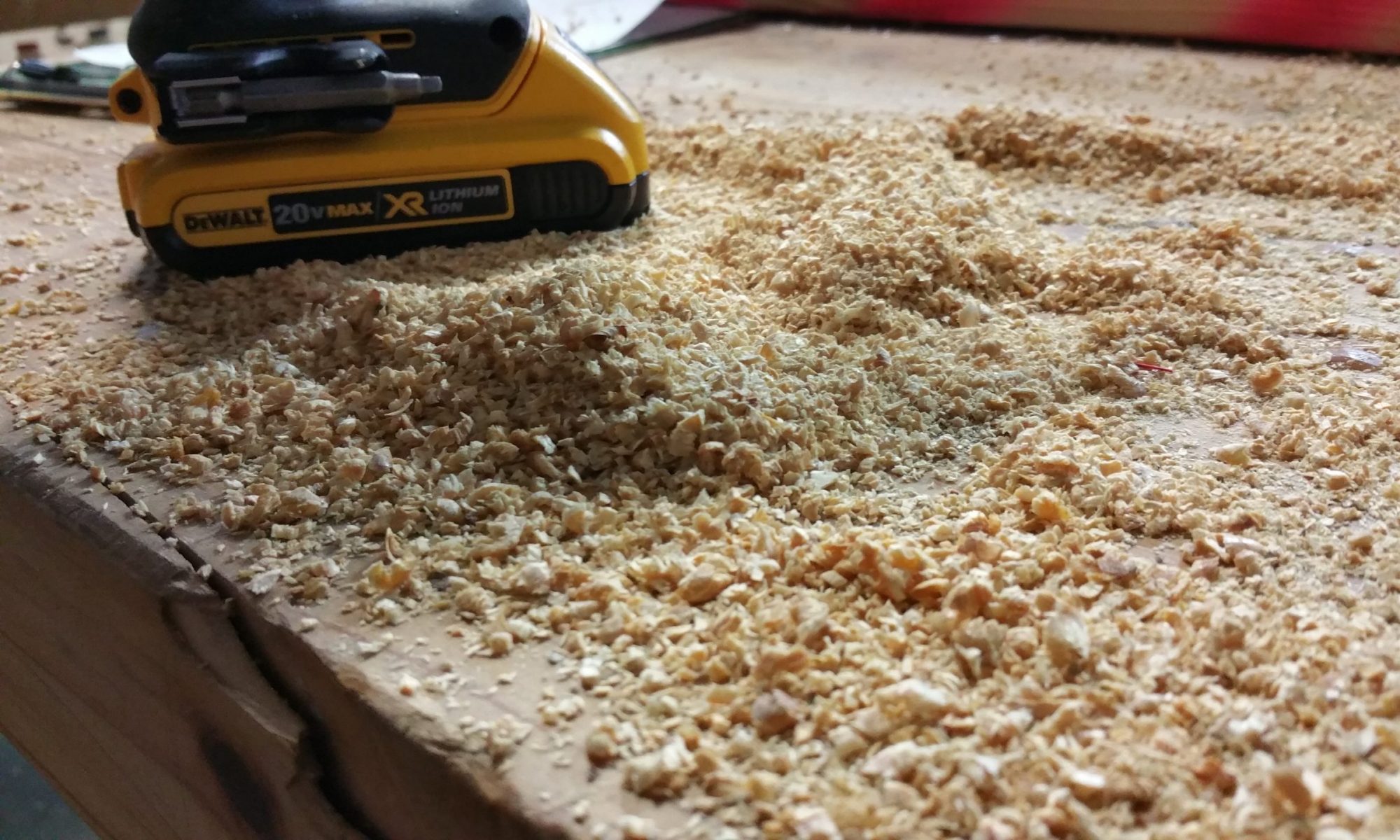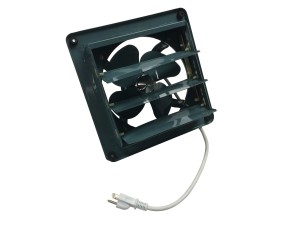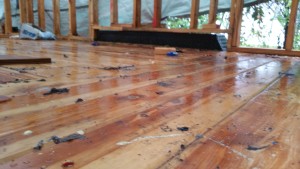
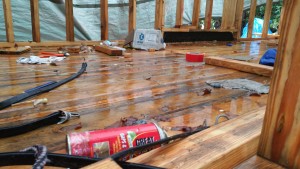
We got a strong rainstorm yesterday, and my worst fear was realized. I’d neglected to tie down one side of the tarp, so the wind must’ve picked it up and flipped it (the tarp) over the side of the house, exposing everything.
Then it rained long and hard, soaking the walls and floor. As far as I know, two “compartments” in the floor got water in them, maybe more.
I repositioned the tarp and tied it down, but noticed it is full of holes. It is disintegrating from being out in the sun for so long.
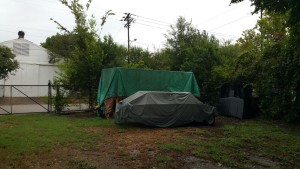
The only thing to do is wait for the rain to stop and let the surface dry out. Eventually those compartments in the floor will mold (the insulation seems to be very good at resisting mold), so I’ll have to open up them up from the bottom and take out the insulation so I can dry everything out.
Next steps? Plow ahead! I’d been afraid of getting the floor wet since I laid it down and now I don’t have to worry about it!
This weekend I plan on squaring the walls and bolting them down (using the brackets I made) next.
